South Florida is typically described as having two seasons: wet (May through October) and dry (November through April). Hydrologists like to split this up a bit further, with the wet season (now called high rainfall, low evapotranspiration season) running June through October, and the dry season now divided into two subseasons: low rainfall, low evapotranspiration (November through February) and a low rainfall, high evapotranspiration season (March through May). What this translates to in layman’s terms seems to be something like “wet, then dry, then really dry.”
Over the last three years, two Aprils have been fairly wet (7.5 inches at my rain gauge this year, and a whopping 9.22 inches the previous year), while one was quite dry (in 2011 we had only 1.15 inches of rain in April). This year, May started off with a bang: Over six inches of rain in the first three days, five and a half of them in one long rainy day that also included at least one tornado here in Boca Raton (at my dentist’s office, no less!).
All that moisture falling from the sky, saturating the local soil, has an effect on wildlife. Saturday morning, after what seemed like forever, the yard was full of odonates again. Damselflies (Rambur’s Forktails, Fragile Forktails, and Everglades Sprites) and dragonflies both (Blue Dasher, Little Blue Dragonlet, Eastern Pondhawk) were flitting around in the tall grass (after months without having to mow, I can see that I’ll be back out on a weekly basis with my trusty reel mower—no gas for me!).
Here’s a shot I liked of one particularly patient Everglades Sprite (Nehalennia pallidula):
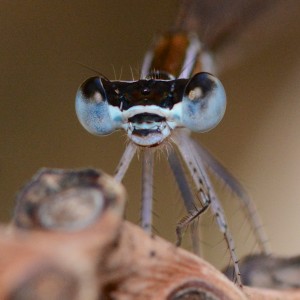
As usual, you can click on the image for a larger view. If you look closely, you can see the individual facets in the right eye:
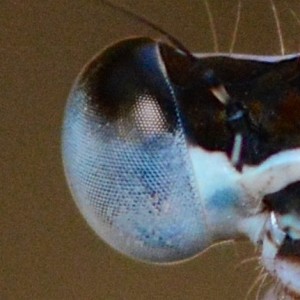
As you may recall, those individual facets in the compound eye are called ommatidia. These tiny simple lenses, in combinations of hundreds (in the simplest compound eyes) to tens of thousands, form a complete image in the brain of the animal. The more ommatidia there are, the greater the visual acuity of the animal in question (in addition to insects, millipedes and mantis shrimp have compound eyes featuring ommatidia). In that respect, they function very much like the pixels on a CCD chip: as you add more pixels to your camera, you can create larger and larger images at high resolution. (Can you tell I got a new camera recently? One with a ridiculously high pixel count?)
Another damselfly appeared a bit after I got tired of chasing those sprites around. This one is a Fragile Forktail (Ischnura posita):
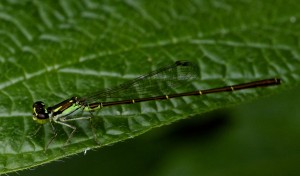
And there was the ubiquitous Rambur’s Forktail as well:
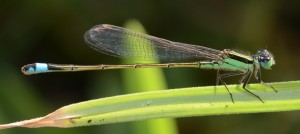
Here’s the first dragonfly I’ve managed to image so far this month; the Blue Dasher (at one point the most commonly photographed odonate on odonatacentral.org):
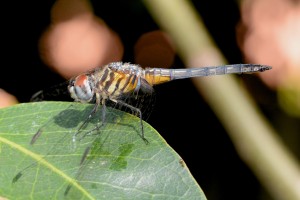
And here’s the second. (Surprise, surprise! Another Blue Dasher):
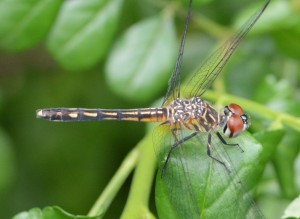
And the third, a different species this time (Little Blue Dragonlet):
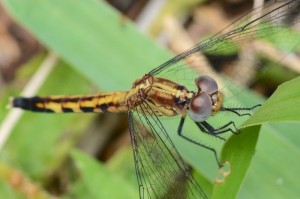
If this keeps up, it might be an interesting season for backyard wildlife after all!
